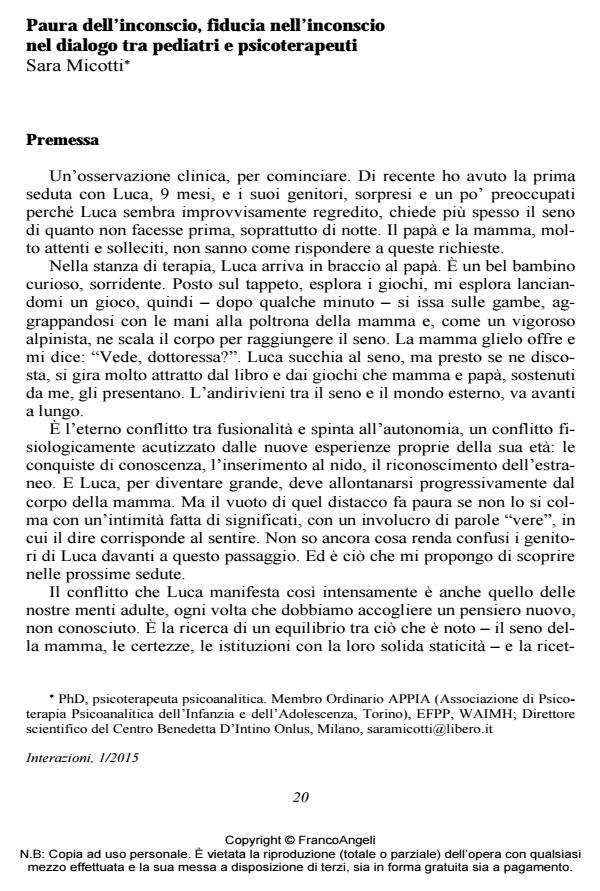Fear of the unconscious and confidence in the unconscious in the dialogue between pediatricians and psychotherapists,
Journal title INTERAZIONI
Author/s Sara Micotti
Publishing Year 2015 Issue 2015/1
Language Italian Pages 13 P. 20-32 File size 76 KB
DOI 10.3280/INT2015-001003
DOI is like a bar code for intellectual property: to have more infomation
click here
Below, you can see the article first page
If you want to buy this article in PDF format, you can do it, following the instructions to buy download credits

FrancoAngeli is member of Publishers International Linking Association, Inc (PILA), a not-for-profit association which run the CrossRef service enabling links to and from online scholarly content.
We can all relate to the feeling of sadness or frustration at not being able to have done something sooner when dealing with latency-aged child, teenage or adult patients: if only we could have been there at the first signs of the problem when more options would have been open to us. In the search for the best way to make contact with parents and children with emotional problems as early as possible, the team of psychotherapistsat the Centro Benedetta D’Intino onlus in Milan, a non-profit service for the prevention and cure of emotional suffering in families and children from birth to 18 years, created a Balint-style case discussiongroupincludingpsychotherapists and paediatricians who work in the same geographic area. Over the five years that the interdisciplinary group has been meeting, the dialogue between paediatricians and psychoanalysts has developed. The fruit of this development is that the group now has more of a psychoanalytical way of considering the relationship between body and mind, the origin of emotions and the transgenerational stories that come hand in hand with "difficult" patients. The group has worked on promoting relationships with others through group reflection about personal experiences of empathy, helplessness, anger and pain - or countertransference - that have taken shape between doctor and patient. Parents with babies now feel more confident in seeking help from a psychotherapist and do so at an earlier stage thanks to the positive dialogue between paediatricians and psychotherapists.
Keywords: Health promotion, "Balintgroup", relationship with difficult patients, countertransference experiences, circulation and transformation of "wild thoughts" in the group
Sara Micotti, Paura dell’inconscio, fiducia nell’inconscio nel dialogo tra pediatri e psicoterapeuti in "INTERAZIONI" 1/2015, pp 20-32, DOI: 10.3280/INT2015-001003